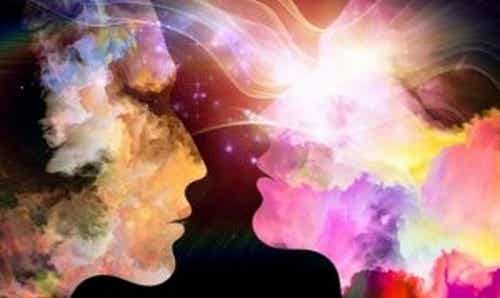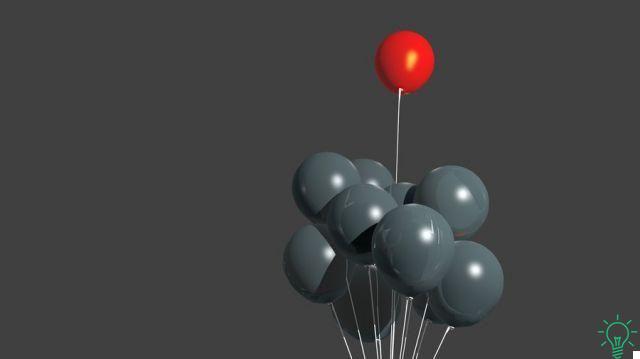5 minutes Think you know all about the G-spot? We present various curiosities and scientific information about it.

Last update: July 12, 2022
Millions of men and women around the world boast of knowing its exact location, but only a few explorers have found it. The G-spot is undoubtedly one of the greatest puzzles of recent centuries, still much debated by scientists. We invite you to discover, therefore, some curiosities about point G.
In popular culture, he has been the star of thousands of books, comic monologues and references in movies and TV series. Very few, however, reflect the reality of the facts. The following curiosities about the G-spot will surprise you.
5 curiosities about the G-spot
It is named after Ernst Grafenberg, German physician and scientist specializing in gynecology and obstetrics. Grafenberg conducted studies of female erogenous zones on the basis of other researchers before him. As early as the XNUMXth century, Regnier de Graaf had described female ejaculation and an erogenous zone in the vaginal wall.
The term G-spot became popular following an article published in 1980 describing a case of female ejaculation related to stimulation of an area in the vagina wall. Since then, the aforementioned area has been called the G-spot and served as the inspiration for thousands of articles, books, essays and other productions.
The above serves to clarify two aspects: first, there has always been talk of an exact, particularly erogenous point in the vagina; second, talking about the G-spot has become a commercial phenomenon. Of course, everyone wants to know where it is, how it feels and how to find it; that's why videos, articles, books and other material about it are published.
In the following lines, therefore, we will only report curiosities about the G-spot endorsed by scientists. We invite you to find out what's true.
1. Its existence is not proven by scientists
Starting a collection of G-spot trivia by denying its possible existence is the perfect example of why this problem is more complicated than you think.
Experts and researchers agree that there is no conclusive evidence to support the existence of the G spot. There is no consensus on location, size or extent, so this area still remains a mystery today.
Given the opinions expressed in this regard, some specialists propose to discard the term G-spot and replace it with the clitouretrovaginal complex. This refers to a functional, dynamic and hormone-dependent area that includes the clitoris, urethra and vaginal wall.
The discussion is not entirely closed, since articles are published every year defending its existence.
2. The stimulation is partly psychological
Evidence indicates that about 50% of women do not believe in the existence of the G-spot. This percentage corresponds to those who have a greater perception of their genitals, more frequent sexual intercourse and a healthy assessment of their sexual function.
Experts have found that women who believe in its existence are often paradoxically unable to locate it in a timely manner. In light of this, it is hypothesized that the stimulation generated in the walls of the vagina is partly subjective.
This does not mean that there are no erogenous zones in these walls, but rather that the subjective component plays an important role. The degree of arousal, comfort and pleasure is essential to "find" and stimulate the G-spot.
3. Female ejaculation is a real phenomenon
Although it can also be achieved through clitoral stimulation, Female ejaculation is often associated with G-spot stimulation. While controversial, experts classify it as a real phenomenon. The fluid produced differs from urine in terms of the concentration of urea and creatinine, so it is a different substance.
The specific function of this fluid is not known (man's semen has a function, for example). Since it has a significant concentration of PSA, it probably has antibacterial properties against the female urethra.
The ejaculation is thought to come from Skene's paraurethral glands, first described by the Scottish gynecologist Alexander Skene.
4. G-spot curiosity: Stimulation is associated with more intense orgasms
We have already established that every orgasm largely depends on subjective or psychological variables. To this we must also add that every body is different, so it is not possible to generalize. Even so, there is evidence that stimulating the vaginal walls can cause more intense orgasms.
For example, a study published in The Journal of Sexual Medicine in 2020 found that the 62% of women find orgasms obtained through vaginal stimulation more enjoyable than those obtained by stimulation of the clitoris.
The latter, however, can be activated more quickly. Despite this, some experts are reluctant to use the label vaginal orgasm and clitoral orgasm.
5. Curiosity about the G-spot: it can be enlarged, but it is not recommended
For several decades a procedure has been proposed to enlarge the G-spot and with it the pleasure experienced during its stimulation.
This is a temporary result and consists of injecting collagen below the surface where the area in question is believed to be. As the experts point out, surgery is not recommended, also because the existence of the G-spot has not been ascertained.
Myths related to this area often create excessive dependence on it. Many couples avoid other channels of stimulation, and by not getting pleasure from this area, their intimacy boils down to dissatisfaction, insecurities and distress.
That is why you could opt for procedures like the one described, which, however, can cause more than one complication: infections, sexual dysfunction, dyspareunia (pain) and others.
Conclusions
The G-spot curiosities presented in this article point to several conclusions. The first is that stimulation of this area should not be excluded, but not all efforts should be focused on it.
Foreplay and stimulation in other areas are equally or even more important in getting pleasure. To choose differently is to be a reductionist.
The second conclusion is that we must put aside the social, cultural and media pressure around the G spot. This can even cause sexual dysfunction. The most important aspect is to explore your body and stimulate those areas where each person finds the most arousal.


























